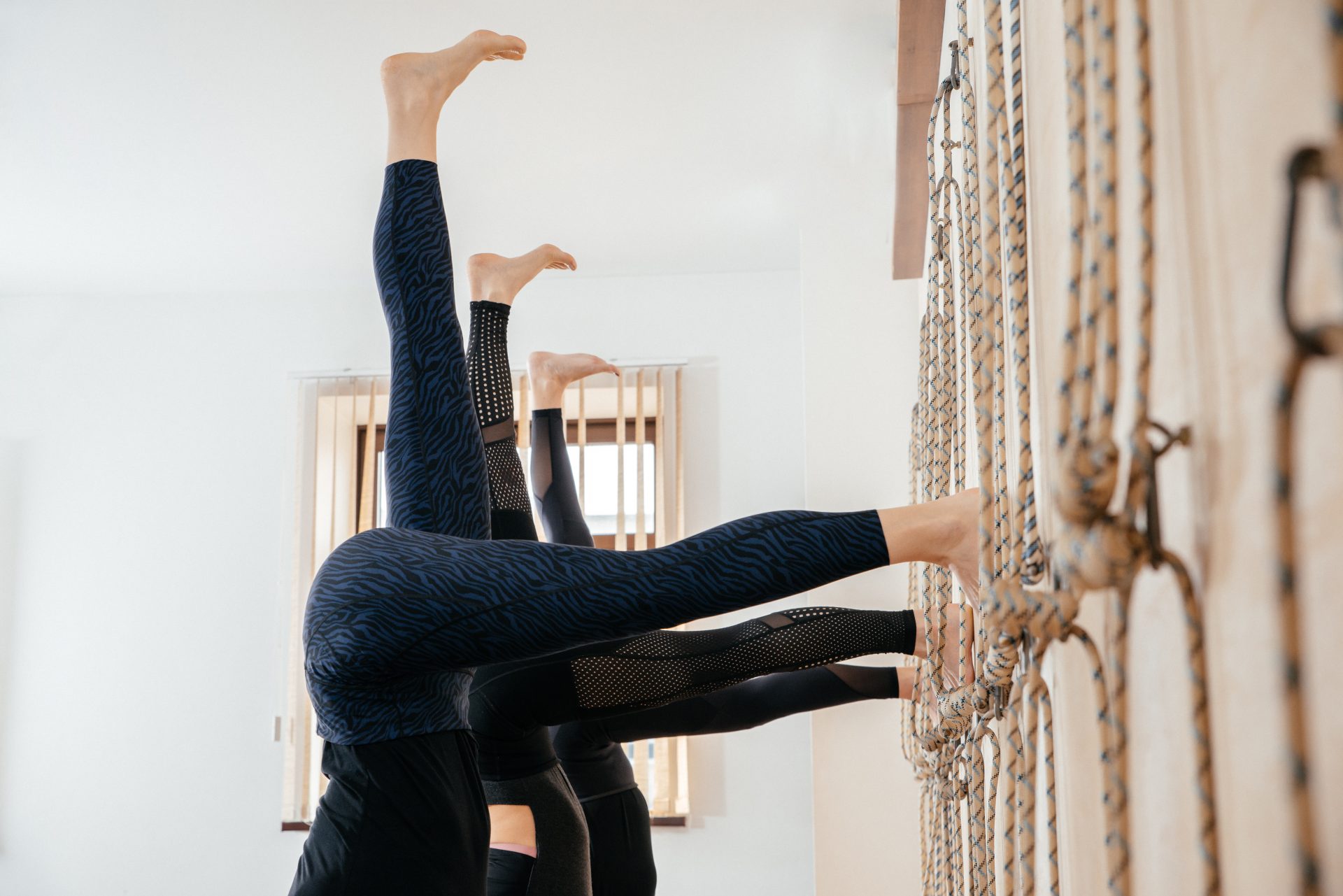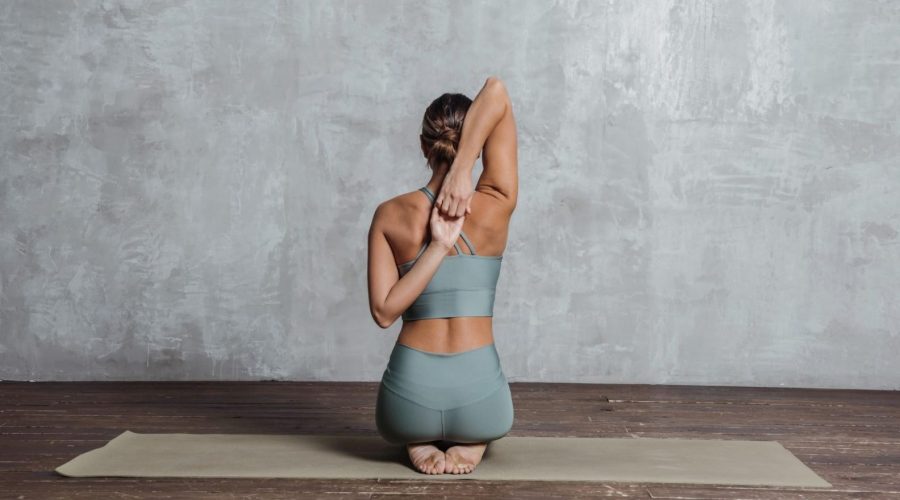Everyone’s doing wall pilates – but is it worth trying?
Classical pilates offers a whole host of benefits, but is this new version of the low-impact exercise as good for us? Alice Porter investigates.
While most of the movements involved in pilates are small and fairly simple, anyone who’s had a pop at mat, classical, ring or reformer pilates will know only too well how bloody painful those micro-movements can be. Go for a faster-paced session, and you may even find yourself out of breath by the end of the hour.
From injury prevention and rehab to improved balance, strength and flexibility, pilates has become the workout of 2022. But going into next year, a new form of the movement is taking off: wall pilates.
Wall pilates is a type of workout that incorporates typical pilates movements while using a wall to help with balance and stability and to add resistance. It’s perfect for home-workouts, as all you need is a yoga mat and a flat wall that you can rest your legs on. As with regular pilates, you can vary the difficulty to tailor it to your own level so it’s suitable for most people.
You may also like
Why is pilates so good for you? 4 scientific benefits of regular pilates
“The great thing about wall pilates is that it can be modified depending on your own ability and injury,” says Helen O’Leary, a physiotherapist and clinical director of Complete Pilates.
What is wall pilates?
Wall pilates is a bodyweight workout that involves using a wall as a form of support and resistance. “Wall pilates is like mat pilates, but you are using the wall as a prop, just like you would use a ball or band,” O’Leary explains.
This mostly involves resting your feet against the wall while doing exercises on your back, so it’s great for targeting the glutes and the core. You can also do standing exercises while leaning against the wall with your upper-body.

The exercises you do during wall pilates workouts are very similar to regular pilates exercise; often, the wall takes the weight of your body, which makes it similar to reformer pilates – albeit a much more affordable version.
“Exercises like bridges are great for wall pilates because you will find you get more spine mobility,” says O’Leary, adding that: “You can also do four-point kneeling work where you put something between your static leg and the wall to ensure you are using your lateral hip well.”
Just like with regular pilates, you can incorporate equipment like balls, resistance bands and blocks to upgrade your practice.
You may also like
Why is pilates so painful and does it ever get easier? Experts explain why certain pilates exercises are meant to burn
What are the benefits of trying wall pilates?
One of the main benefits of wall pilates is that it’s very accessible – you only need a yoga mat and a wall to get started. Plus, it’s perfect for people who are just getting started with pilates, as you can use the wall to help you if you struggle with balance or you’re lacking in core strength.
“The wall can act as a guide to ensure you’re keeping your form,” O’Leary adds, explaining that keeping your feet or hands in one place will help to ensure your posture is correct and you don’t start to do the exercise incorrectly while moving.
“The wall can also give you confidence when learning balance exercises as there is some support if you need it,” she continues to explain. “You can also do loads of standing work which is great if you struggle to get onto the floor or down to a low reformer.”
Is wall pilates worth trying?
To see if wall pilates is really all it’s cracked up to be, I tried a 10-minute online class from Trifecta Pilates. I’ve tried pilates in the past but I’m not very experienced with it, so I was interested to see how I’d get on with the workout as a beginner.
Setting myself up in front of a flat wall with my yoga mat facing vertically away from the wall, I started by lying on my back and placing my feet flat against the wall so my shins were parallel to the floor. We started with glute bridges, and I found that I was able to lift my bum further off the floor with my legs rested against the wall, which provided a nice stretch through my spine.
Having my legs against the wall meant I was able to engage my glutes better – removing some of the pressure that glute bridges normally put on my calves and hamstrings. Great if you’re after a glute-burner, less so if you want a proper lower-body workout. Having my feet against the wall also meant that this movement was seriously low-impact and my knees felt more protected than normal.
The rest of the workout was made up of ab exercises such as crunches, which were similar to how these movements usually feel, engaging the core and the obliques. Resting my feet against the wall made the ab movements feel slightly more difficult compared to having my feet on the floor, but easier than if my shins were hovering parallel to the floor without having anything to rest on, as is often the case in pilates.
Overall, the wall pilates session left me feeling more mobile and open. I’d got a full-body, low-impact workout in just a few minutes, which didn’t feel overly challenging. Sure, I wouldn’t replace my current strength training with it, but it would be a good style of workout to supplement with on active rest days or before workouts to warm up your muscles.
It’d also be a great circuit-breaker on WFH days when you want a mental shakeout without getting a sweat on.
Images: Getty
Source: Read Full Article
